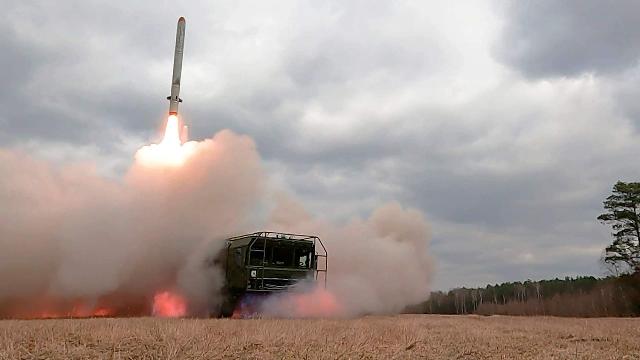Russia has a large arsenal of weapons capable of hitting any target on the territory of Ukraine.
Systematic complex missile attacks on Ukrainian military and dual infrastructure facilities are carried out by various branches of the Armed Forces of the Russian Federation. Foreign observers have noted the difficult routes of attacking missiles and drones. Why this happens, what is the logic of planning such strikes, and how the enemy's air defenses are hacked — see the Izvestia article.
Complex missile and drone strikes
In the course of massive attacks on military installations on the territory of Ukraine, attacking missiles and UAVs sometimes move along very intricate routes. Sometimes there may even be thoughts about the expediency of such complex maneuvers. They often enter the same object from different directions and perform maneuvers deep in the territory of Ukraine. But if you delve into the nuances, then a lot becomes clear.
In such attacks, not one or two, but a whole range of tasks of a very different nature are solved, and this is not just a missile and drone strike, but a well-thought-out and pre-planned operation of diverse forces.
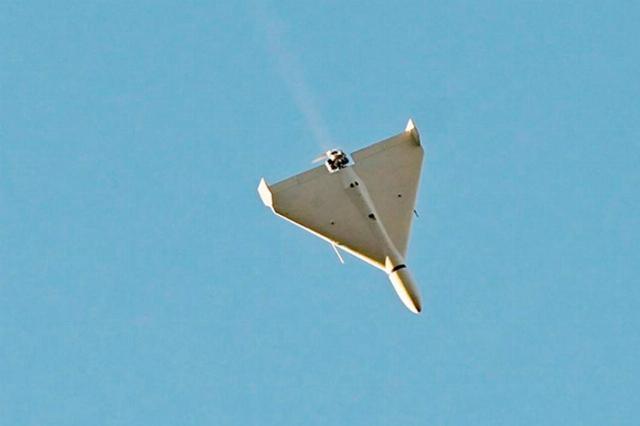
Kamikaze drone "Geran-2"
Image source: Photo: Ministry of Defense of the Russian Federation
Firstly, different shock systems are involved in such attacks. Not only missiles, but also, for example, kamikaze drones of the Geranium type and others. In particular, cruise missiles of several types, supersonic and hypersonic cruise missiles, as well as ballistic missile munitions are used to distract the enemy's air defense. Of course, the principles of use and objectives of such a wide range of strike weapons should be different.
Wide range of products
All of them have different capabilities and technical characteristics. Kamikaze drones of the Geranium type attack in large numbers at low altitudes and at a relatively low speed of 150-170 km / h. The flight range can be up to 2000 km, which is more than enough to hit any targets on the territory of Ukraine and provides some range for maneuvers.
Cruise missiles such as Kalibr (marine), 9M728 (Iskander-M complex, land-based) or X-555 (air) have a range of 500 to 2500 km and fly at a higher, but still subsonic speed with a circumference of the terrain.
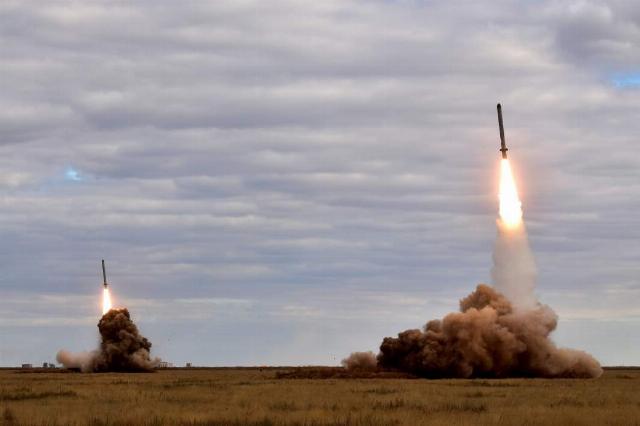
Combat launches of Iskander-M cruise missiles
Image source: Photo: TASS
The less noticeable and more advanced X-101 air-launched missiles fly almost the same way. The X-59M and X-69 front-line missiles have a shorter range, but they are more stealthy, as they are smaller in size and, consequently, have a smaller warhead. Supersonic X-31 anti—radar missiles also have a range of literally a couple hundred kilometers, but due to their speed they can hit objects quickly - before the target changes position.
The X-22 missiles and their modifications are extremely difficult to shoot down due to the high, close to hypersonic flight speed. Iskander-M complex 9M723 hypersonic missiles, Dagger and Zircon missiles are also practically inaccessible targets for the Ukrainian air defense, but these missiles cannot fly along a complex route — they are aeroballistic and can perform only limited maneuvers only to disrupt the anti-missile system.
Planning strikes
Having such a diverse composition of forces and means, it is necessary to use them as effectively as possible. And it is necessary to solve several tasks at the same time — it is very wasteful to arrange a separate operation for each purpose.
A simple example is that in the process of launching attacks by Geranium drones on dual infrastructure facilities and warehouses of weapons and military equipment, the enemy's air defense system may be exposed. It is being hit by cruise missiles.
During the cruise missile strike, the enemy uses backup air defense systems that were previously in radio silence mode.
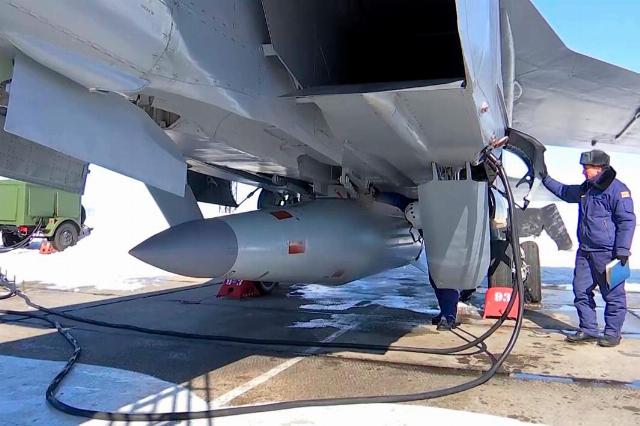
MiG-31 fighter jet with hypersonic aeroballistic missile
Image source: Photo: RIA Novosti/Ministry of Defense of the Russian Federation
They are also opened, and they are attacked, depending on the type — either cruise or aeroballistic missiles. As a result, we get several stages, goals and objectives in one operation.
Overseas complexes
Another point is that Patriot air defense systems, for example, do not have a circular kill zone, but a sector one. Of course, it is possible to build a circular defense of an object from several Patriots, but only if the enemy has enough complexes and launchers at his disposal. At the same time, the enemy is constantly moving its air defense systems to get them out of the range of possible Russian missile strikes.
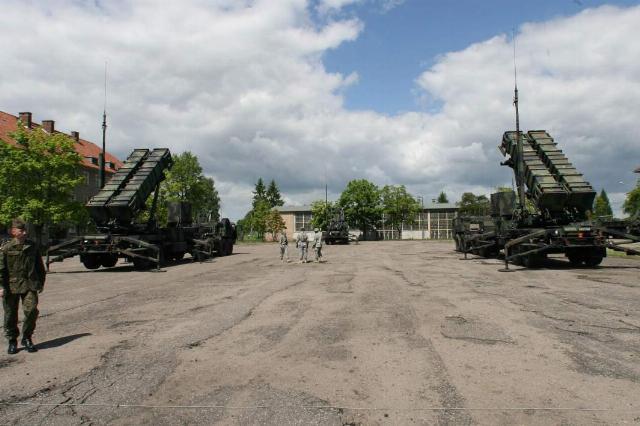
Patriot Air Defense Systems
Image source: Photo: RIA Novosti/Igor Zarembo
Thus, the most effective attack on a protected object or the air defense system itself will be a strike from different directions and simultaneously with missiles of different types. The probability of overcoming even a layered air defense system in this way is greatly increased. But in order to reach a remote target from different directions, and even at one moment with missiles of different types, you need to carefully plan their routes. Hence the nature of complex and confusing routes.
Moreover, the enemy also has the means of radar detection. It also receives data from long-range radar detection aircraft from NATO countries.
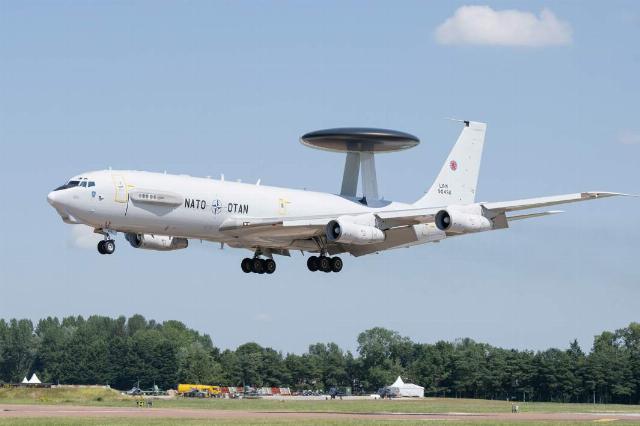
NATO Boeing E-3 Sentry Long-range Radar Detection Aircraft
Image source: Photo: TASS/Zuma/Cody Froggatt
The more missiles with unpredictable routes the enemy's operators see on their radars, the more difficult it will be to prepare for a repulse. The simplest attack, a strike along the shortest route, allows you to concentrate the bulk of air defense systems in its direction and thereby increase the density of defense.
And, of course, often less expensive drones can act as false targets, distracting the attention of air defense systems. They can move at a deliberately higher altitude and have a specially planned route. At this time, the main strike missiles, hiding in the folds of the terrain, will pass unnoticed to the targets.
A modern missile and drone attack is a complex military operation in which success depends on a huge number of factors. And with the development of weapons systems, they are unlikely to become easier.
Dmitry Kornev
